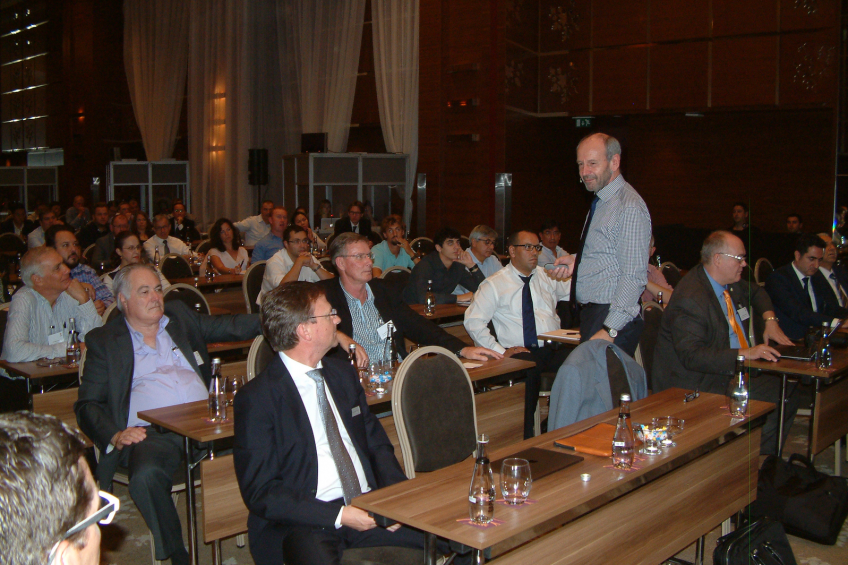Focus on key traits in layers

Managing director, professor Rudi Preisinger of Lohmann Tierzucht, explains why his company is focusing on key traits more than on welfare traits. Profit per hen housed is the name of our game.
Gather an audience of layer distributors and hatchery experts from around the world and you can be assured that, when it comes to the most favourable genetic traits, there will be no consensus. “Well, there is one. Upping the profit per hen housed,” explains professor Rudi Preisinger of Lohmann Tierzucht at the 53rd Franchise Distributor Meeting in Istanbul.
According to the chief geneticist of Lohmann, the layer traits that are at the forefront of the mind differ by region and sometimes even by country. One of the attendees at the distributors meeting even asked the question of whether there were any prospects that genetic selection could lead to a chicken that is resistant to Avian Influenza. “That is what the industry is dreaming about, especially with the AI threat everywhere around us. But allow me to rid of that dream. There is no such thing as a chicken that is 100% resistant to bird flu. That is just wishful thinking. We have to be honest with ourselves. The virus is far smarter than we are.” Preisinger continued: “And even if we were able to identify certain markers that would help protect our birds, I will never put my trust on that single pillar alone. Improved biosecurity, knowledge about compensation in the case of an individual outbreak to serve as an incentive to report outbreaks, as well as possible vaccination strategies should be in place to mitigate the damage bird flu can do.”
But disease resistance is only one trait sought after, there are many others as well. Birds with less of a tendency to feather peck for countries banning beak treatment, birds with dryer manure for countries with strict environmental legislation or birds with stronger bones for countries where feed composition sometimes lacks the right source of calcium. “We know that these demands are there and we are working on them. But our top priority is to improve key traits. In the end, it is all about the money, the profit per hen housed.”
The selection goals of Lohmann will not focus on current market needs alone, but also on the global market needs of the future. “That means longer cycles, improved FCR, a higher number of saleable eggs, bird welfare and egg quality.”
Cage will stay dominant
It is the focus on these key traits in Lohmann layers that should ensure that the industry is able to cope with the future demand for animal protein. The huge demand is also the reason that cage systems will dominate world egg production for years to come. According to speaker André Brand of Trouw Nutrition, the egg industry doesn’t have the luxury on a worldwide scale to venture out into production systems that aren’t the most efficient. By citing the axiom of having to provide food for nine billion people by 2050 and showing that the current year-to-year increase of food production is only 2%, he stresses the fact that we are falling way short. “We need to increase production by 70% by 2050 and, at the same time, reduce the environmental impact by 75% to be sustainable. Surging demand and struggling supply means that we need to reinvent ourselves,” says Brand.
Optimising feeding strategies is one of the tools that can be used to increase production with less impact on the environment. “But I am sorry to say that, if you aim for the lowest feed costs only, I am sure you are not going to win this race. Nutrition by the numbers, with good raw materials and exact nutrients, will make a difference. As will fine tuning the feeding of your birds.” According to Brand, split-feeding is one of those strategies. “When you know that the egg yolk is formed in the morning and the shell later in the day, you should tune your feeding strategy and feed composition to the birds’ needs so that you waist no valuable ingredients. Experience shows that split-feeding does increase the number of sellable eggs and gives better persistency.”
Lohmann Tierzuchts managing director Javier Ramirez Villaescusa compared the avian influenza outbreak to a meteor strike.
Avian influenza
Another reason for everyone to get the most out of their flock will be the consequences of the most recent outbreak of Avian Influenza. Preisinger: “The disease has no winners. Some will profit from the harm done to the farmers hit by influenza and get high prices for their eggs, but experience teaches that, after a price hike of about a half year, we will see prices under average for 1.5 years, including record lows, after all farms get back into production. Short-term profits will be far outnumbered by long-term losses.”
Preisinger: “Even so, we should be prepared for more outbreaks. The virus is present in the wild bird population all around us, so it is only a matter of time before influenza strikes again.” Lohmann Tierzuchts’ managing director Javier Ramirez Villaescusa compared the avian influenza outbreak to a meteor strike. “We didn’t see it coming and we will not see it coming the next time. The only thing we can do is ensure we are able to withstand the blast.” His organisation felt the effects of the spring 2015 outbreak as no other. “We were used to supplying all our customers from one place, Germany. It took tremendous efforts by our distributors all over the world to keep the business running smoothly while borders were closed. It is only now that we are prepared as a company for the next outbreak on this scale. That is why we have placed grandparent stock on different continents. For us and for everyone else, it’s a matter of preparing and bracing ourselves for the arrival of the next outbreak.”













